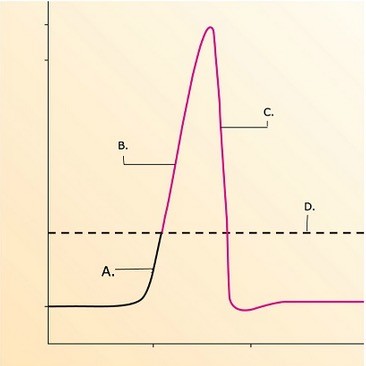Roger went for his yearly eye examination and was informed that his intraocular pressure was slightly elevated (at 22 mm Hg). The physician expressed concern over this condition and noted that if the condition got worse, eyedrops would be merited. What is wrong with Roger's eyes, and what are the possible consequences of this condition? Explain the function of eyedrops used for therapy.
What will be an ideal response?
If the drainage of the aqueous humor is blocked, pressure within the eye can increase, causing compression of the retina and optic nerve, resulting in a condition called glaucoma. The resulting destruction of the neural structures causes blindness unless the condition is detected early. Early glaucoma can be treated with eyedrops that increase the rate of aqueous humor drainage or decrease its production.
You might also like to view...
Which of the following is not true of oxytocin?
A) It is one of the few hormones that is regulated by a positive feedback loop. B) It is produced in the thyroid gland. C) It stimulates "milk letdown" in nursing mothers. D) It causes the contractions of the uterus during labor.
In which bone is the foramen magnum located, and what is significant about this opening?
A) sphenoid; surrounds the connection between the brain and the spinal cord B) sphenoid; permits the passage of a branch of the trigeminal nerve C) temporal; permits the passage of a branch of the trigeminal nerve D) occipital; permits the passage of the hypoglossal nerve E) occipital; surrounds the connection between the brain and the spinal cord
Circumvallate papilla are located:
a. in the duodenum b. around the opening of the uterine tube c. on the base of the tongue d. over most of the surface of the tongue
 What does "D" represent on the diagram?
What does "D" represent on the diagram?
A. Depolarization phase of action potential B. Threshold C. Repolarization phase of action potential D. Depolarization